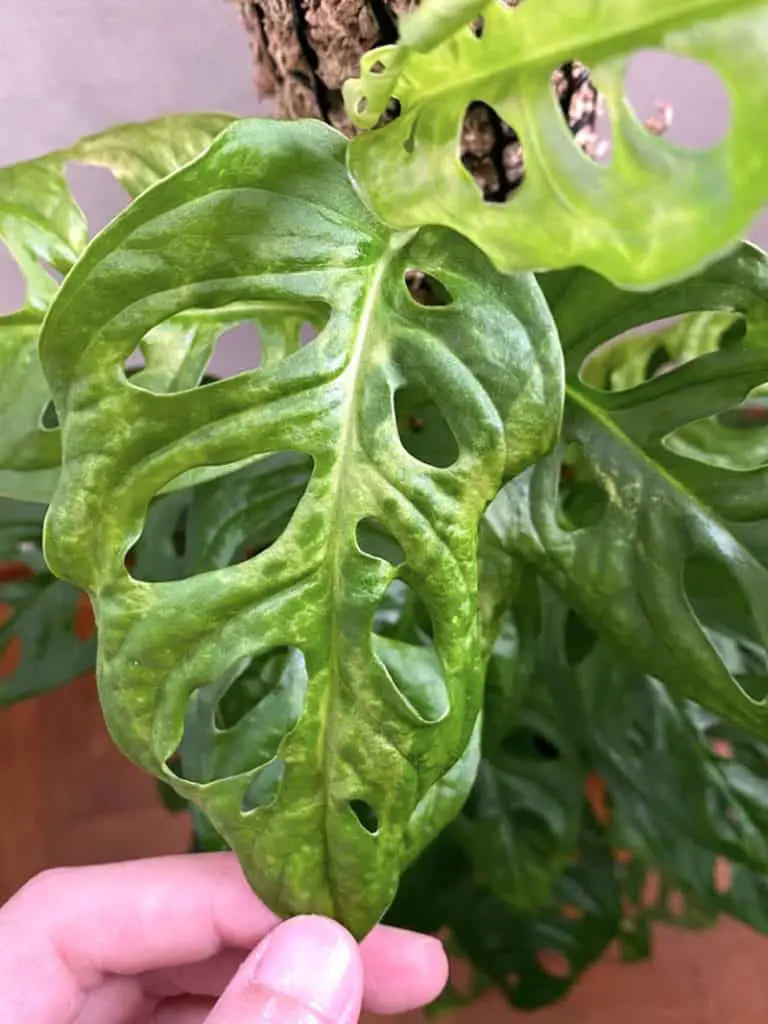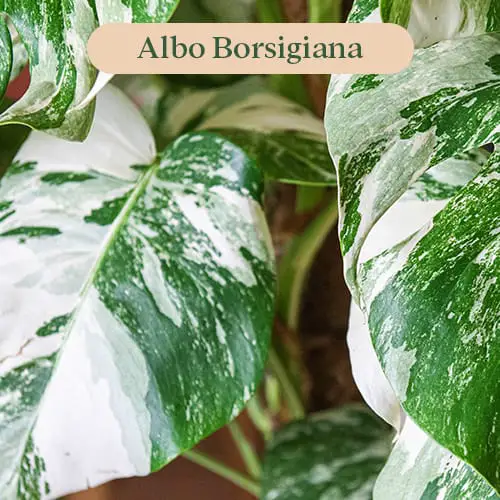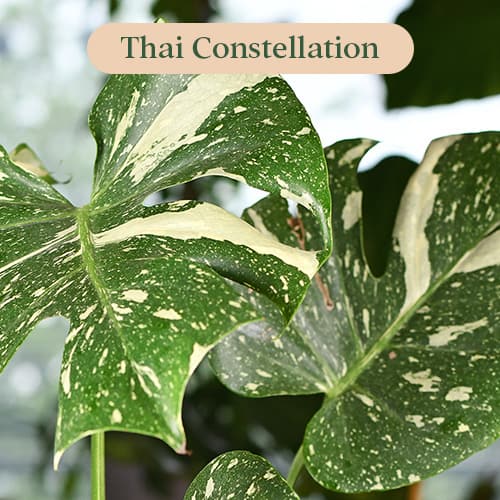
Imagine you are watering your Monstera plant. Suddenly, you notice one section of the leaf that is strangely different in color. What is that small white line on my Monstera Deliciosa? Could it be variegation?
A variegated Monstera can be identified by its marble-like textures on leaves, vines, and stems. This variegation often varies in color from cream white (albo), yellow (aurea), to green (sport). Unfortunately, it is very easy to mistake a mosaic virus for variegation.
In this article, I will guide you on accurately identifying the different varieties of Monstera Variegata and estimating the plant’s value.
Let’s get started!
What Causes of Variegation in Monstera?
There are three possible causes of variegation on Monstera plants:
Natural Mutation
Genetic mutations, also known as chimeral variegation, can cause chloroplast defects in leaves, causing the leaves to fail to produce chlorophyll.
Chlorophyll is the green pigment that enables leaves to produce energy to grow through photosynthesis.
Thus, the absence of chlorophyll in part of a plant’s leaves will result in that area having a solid white color.
You should know that variegation caused by natural mutation is not stable and may turn green again. Once you lose the variegation, new leaves will not have variegation either.
Tissue Culture
Tissue culture is a force variegation technique done in labs to intentionally cause the Monstera cuttings to lack chlorophyll.
This technique permanently damages the genetic cells of the plant, which makes variegation stable. Your Monstera will not lose variegation over time.
Mosaic Virus
Mosaic virus also causes spots of white, yellow or green discoloration on leaves. As a result, Mosaic viruses are often mistaken for variegation in Monstera.

However, this is a rare plant disease that will kill your Monstera and spread to other plants.
Unfortunately, the Mosaic virus is not treatable. If your Monstera is infected, you will need to remove and destroy the plant. Don’t compost them because this can allow the virus to remain viable.
Patterns on Monstera Variegation
There are two types of variegation patterns in Monstera:
Sectoral Pattern
Sectoral variegation will have large patches of creamy white color, and sometimes one leaf may turn all white.
Marble Pattern
Marble variegation patterns have evenly-distributed patches of light and dark across the surface of the leaves.
Types of Variegation Colors
I bet you know of white cream Monstera variegation, as that is the most commonly shared type on social media.
However, there are actually three different colors of variegation found in Monstera:
– Sport (Light green variegation)
– Aurea (Yellow variegation)
– Albo (White or cream variegation)
Depending on the color of the variegation, each is called a different name.
For example, if you happen to have a white variegated Monstera Deliciosa, then you would call it a Monstera Deliciosa Albo. But, if it’s yellow-variegated, you’ll know that what you have is called a Monstera Deliciosa Aurea.
Popular Varieties of Variegated Monstera
Here are some of the most popular Monstera Variegata that are available online:
Monstera Albo Borsigiana
Although some argue that Monstera Deliciosa is different than Borsigiana, it is actually the same species.
Thanks to Instagram, Monstera Albo Borsigiana has become one of the most popular Monstera variegata.

The variegation on M. Albo Borsigiana is caused by natural mutation and will manifest as large patches of white on the leaves. These patches are unstable and can turn back green.
A single cutting of Monstera Albo Borsigiana is worth about $250, while a rooted plant can cost anywhere from $400 to $1,000, depending on the number of leaves it has.
Monstera Thai Constellation
This popular house plant has been subjected to artificial mutation and is a product of plant tissue culture in a lab in Thailand.

It has beautiful variegation of both sectoral and marble patterns, making it among the most sought-after plants. As a tissue cultured plant, the variegation is very stable and will be inherited to new leaves as they grow.
I’ve never seen Thai Constellation sold as a cutting, but a rooted Monstera Thai Constellation can cost anywhere from $250 to $350.
Monstera Deliciosa Aurea
Monstera Deliciosa Aurea, also known as Monstera Marmorata, has yellow-colored variegation that resembles the appearance of a Golden Pothos.
Its sectoral pattern variegation is also unstable and requires proper care to maintain. If you find any leaves have turned green, trim them straight away to preserve the variegation.
The Aurea variety of Monstera Deliciosa is extremely rare, reflected in its high price. A rooted plant will cost anywhere between $2,000 -$3,000!
Is It Possible for Regular Monstera to Develop Variegation?
Although uncommon, regular Monstera can develop variegation over time. A friend of mine got lucky where one of his Monstera Deliciosa cuttings start to show Albo variegation.
The chances of randomly developing a variegated Monstera are only about 1 in 100,000. This means, to get a variegated Monstera, you would have to propagate 100,000 cuttings and hope one of the cuttings develops variegation.
Do you now understand why Monstera variegata can often be extremely expensive?
